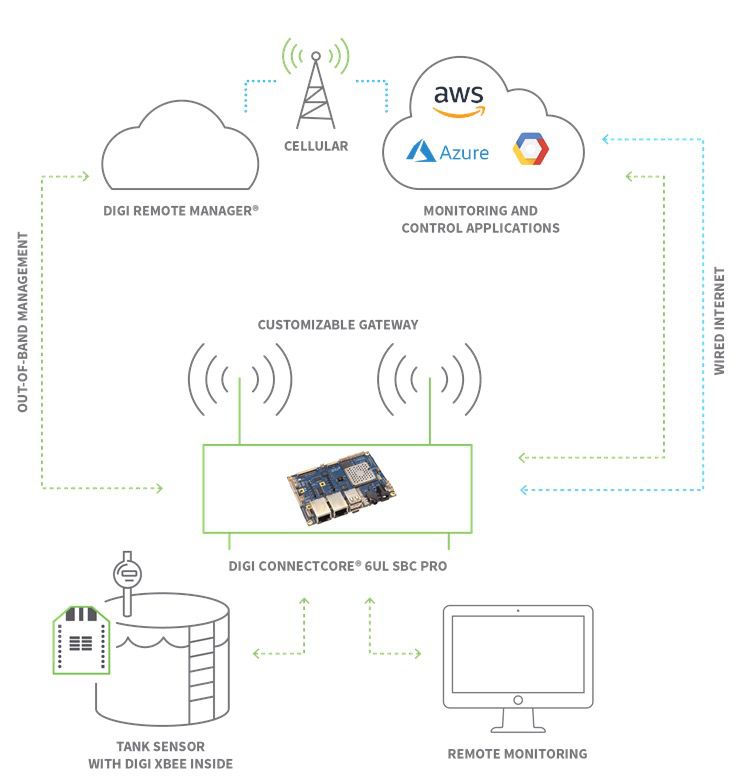Remote IoT Device Management: Control From Anywhere
Is the world truly at your fingertips? The burgeoning Internet of Things (IoT) landscape emphatically declares: yes. From adjusting your home thermostat from across continents to managing industrial machinery in real-time, the power of remote access and control has irrevocably transformed how we interact with our increasingly connected world.
This isn't science fiction; it's the tangible reality of IoT, impacting homes, businesses, and entire industries. Imagine a world where farmers can monitor soil moisture levels from their smartphones, triggering automated irrigation systems, or where energy companies can predict equipment failures and dispatch maintenance crews proactively, minimizing downtime. This level of interconnectedness, facilitated by the seamless integration of sensors, software, and cloud technology, is driving unprecedented efficiency and empowering us in ways previously unimaginable.
| Key IoT Concepts | Description |
| Remote Device Management | Controlling and monitoring IoT devices from anywhere via internet connectivity. |
| IoT Platforms | Cloud-based systems that facilitate device connectivity, data management, and application development. Examples include AWS IoT, Azure IoT, and Google Cloud IoT. |
| APIs (Application Programming Interfaces) | Sets of rules and specifications that allow different software systems to communicate and interact. Crucial for integrating various IoT components. |
| Security Considerations | Protecting IoT devices from unauthorized access and cyber threats through measures like firewalls, VPNs, and robust authentication protocols. |
Reference: A Brief History of the Internet of Things (IoT)
The key to this revolution lies in the convergence of several technological advancements. High-speed internet connectivity, powerful cloud computing platforms, and miniaturized, affordable sensors have coalesced to create a perfect storm of innovation. These elements provide the infrastructure for a truly interconnected world, allowing us to collect and analyze data from virtually any device, anywhere.
Consider the sheer variety of applications. Smart home technology allows you to control lighting, security systems, and appliances with a simple voice command or a tap on your phone. In the industrial sector, IoT sensors embedded in machinery provide real-time performance data, enabling predictive maintenance and optimizing operational efficiency. Even in agriculture, IoT-enabled sensors monitor crop health, soil conditions, and weather patterns, empowering farmers to make data-driven decisions that maximize yields and minimize resource consumption.
Platforms like SocketXP offer cloud-based IoT device management and remote access, enabling users to manage entire fleets of Raspberry Pis or other Linux machines behind firewalls and NAT routers. The ability to push software updates, monitor device health, and control functionality remotely streamlines management and reduces operational overhead.
For developers, APIs like AWS IoT, Google Cloud IoT, and Azure IoT offer robust toolsets for building sophisticated IoT applications. These platforms provide secure device connectivity, data ingestion and processing, and a range of other services that simplify the development lifecycle.
Beyond the convenience of remote control, IoT offers a powerful mechanism for data collection and analysis. The data generated by connected devices provides valuable insights into usage patterns, performance metrics, and environmental conditions. This data can be leveraged to improve product design, optimize operations, and even predict future trends.
Security, of course, is paramount. As our reliance on connected devices grows, so too does the potential for cyber threats. Robust security measures, including firewalls, VPNs, and strong authentication protocols, are crucial for protecting IoT devices and the sensitive data they collect.
Remote access to IoT devices offers numerous advantages. Continuous monitoring allows for immediate responses to critical issues, optimizing uptime and preventing costly disruptions. The ability to control devices remotely increases flexibility and responsiveness, enabling businesses to adapt quickly to changing conditions. Enhanced automation streamlines operations, reducing manual intervention and improving efficiency.
From the individual homeowner controlling their smart thermostat to the global enterprise managing a complex industrial network, the impact of IoT is undeniable. Its a transformative technology that empowers us to connect, control, and optimize the world around us in ways were only just beginning to understand. The future is connected, and its at our fingertips.



Detail Author:
- Name : Mr. Donato Mann
- Username : gustave.lubowitz
- Email : demarcus74@kemmer.com
- Birthdate : 2006-02-25
- Address : 902 Bins Plaza Suite 110 South Hope, IA 39029-5388
- Phone : 1-651-747-9146
- Company : McDermott LLC
- Job : Pipelayer
- Bio : Explicabo iusto quis sint veritatis. Sint ut eius quis consectetur. Et accusamus molestiae dolor quas.
Socials
twitter:
- url : https://twitter.com/kautzerl
- username : kautzerl
- bio : Ab nihil aut dicta qui. Dolor eum eum itaque illo. Rem quasi nemo accusantium ut.
- followers : 1380
- following : 90
instagram:
- url : https://instagram.com/lkautzer
- username : lkautzer
- bio : Et id explicabo accusamus dolores. Fuga recusandae eos consectetur qui omnis porro.
- followers : 4133
- following : 2083
linkedin:
- url : https://linkedin.com/in/kautzer1989
- username : kautzer1989
- bio : Voluptatum modi eaque quam.
- followers : 6239
- following : 2430